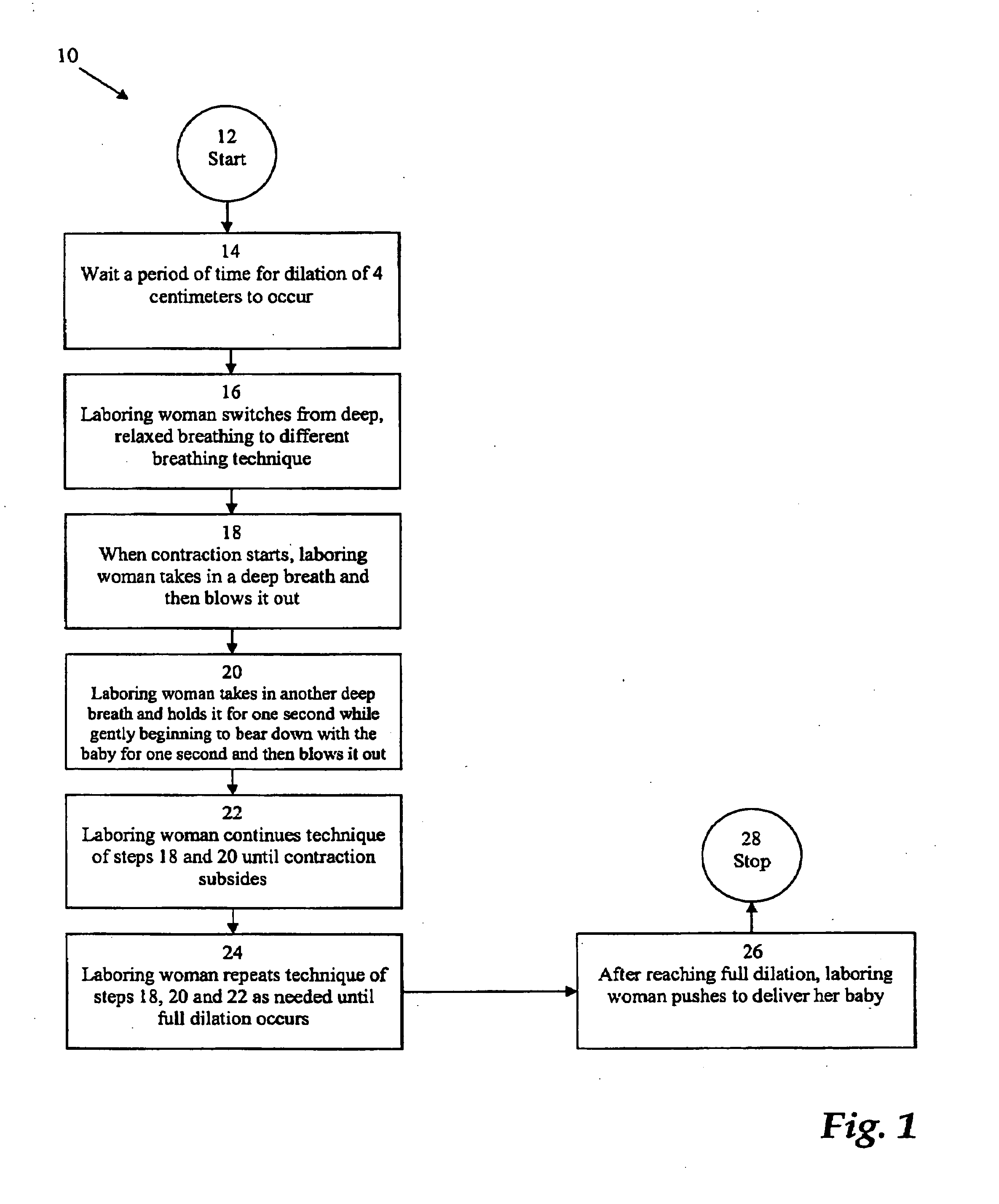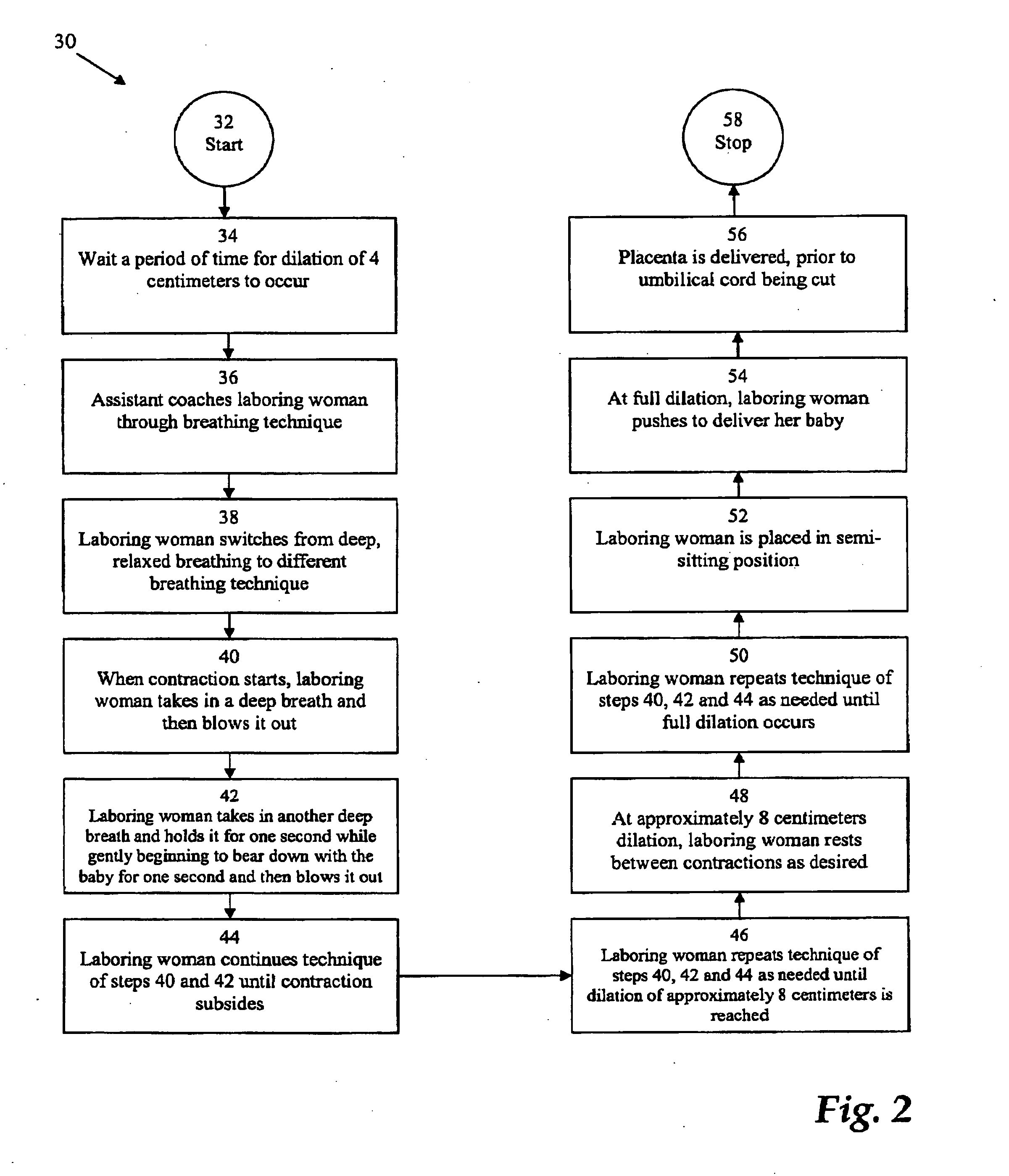Method for managing labor and childbirth
a technology applied in the field of methods for managing labor and childbirth, can solve the problems of inability to understand the physiology of the body, injuring the mother, or causing the death of the unborn child,
- Summary
- Abstract
- Description
- Claims
- Application Information
AI Technical Summary
Benefits of technology
Problems solved by technology
Method used
Image
Examples
Embodiment Construction
[0013]Referring first to FIG. 1, a flowchart shows the steps of a method for managing labor and childbirth 10 (hereinafter the “method 10”), consistent with an embodiment of the present invention. The method 10 is useful for preventing extreme pain, prolonged labor, and unnecessary cesarean sections and epidural anesthesia during childbirth. The present invention dispenses with a general rule in obstetrics which currently holds that a laboring woman must not be allowed to push until her cervix is completely dilated to ten centimeters. Rather with the present invention, the laboring woman is encouraged to push when she feels a natural urge to do so.
[0014]A preferred embodiment of the method 10 comprises several steps. The first step of the method 10 involves waiting a period of time for cervical dilation of 4 centimeters to occur 14. Prior to this time, the laboring woman will have gone through a first stage of labor, preferably defined as the softening and effacement of the cervix, ...
PUM
 Login to View More
Login to View More Abstract
Description
Claims
Application Information
 Login to View More
Login to View More - R&D
- Intellectual Property
- Life Sciences
- Materials
- Tech Scout
- Unparalleled Data Quality
- Higher Quality Content
- 60% Fewer Hallucinations
Browse by: Latest US Patents, China's latest patents, Technical Efficacy Thesaurus, Application Domain, Technology Topic, Popular Technical Reports.
© 2025 PatSnap. All rights reserved.Legal|Privacy policy|Modern Slavery Act Transparency Statement|Sitemap|About US| Contact US: help@patsnap.com



